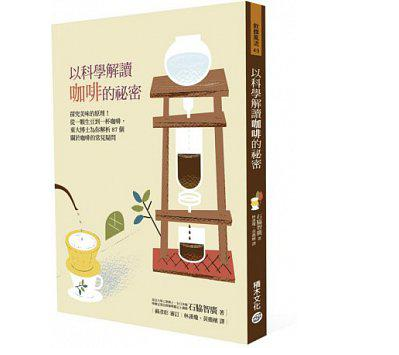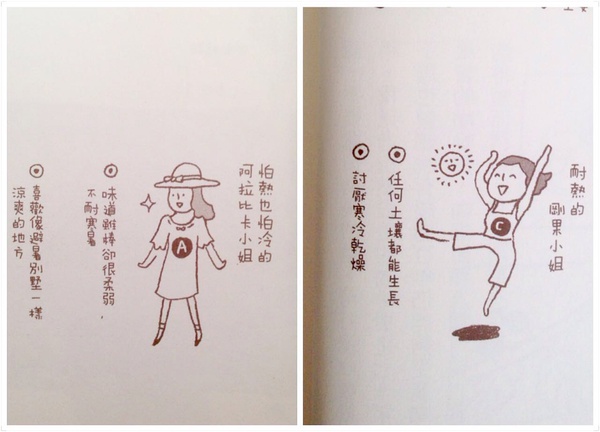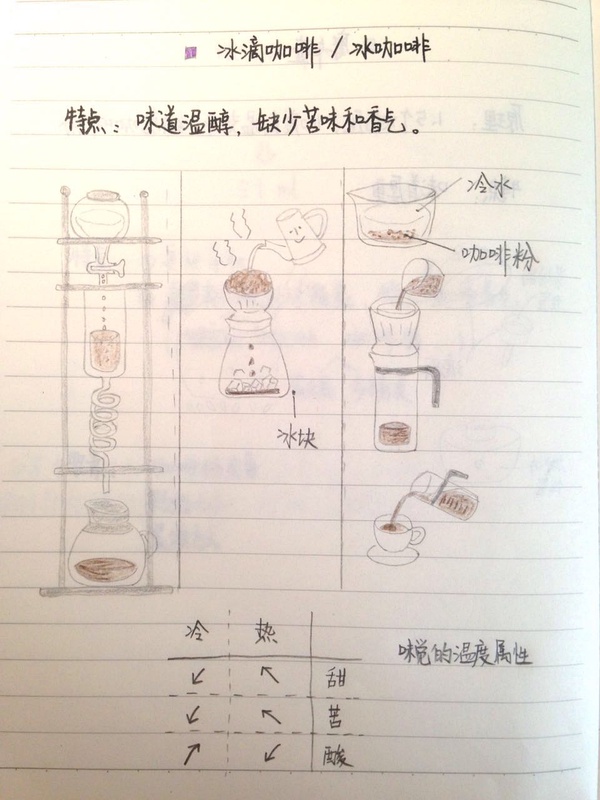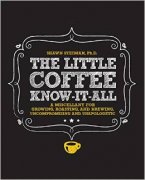Coffee book recommendation: coffee popular science reading "explaining the secrets of coffee with science"

Friends around me drink less coffee, and I drink one or two cups a day to have a sense of security, so they travel to Southeast Asia, always do not forget to bring me coffee beans, coffee powder, and once even a drip cup. Last December, after a sweet little girl came back from Hong Kong, she gave me a book I bought at Eslite Bookstore, wrapped in a dark green paper bag. It was this book, The Secret of Coffee in Scientific Interpretation.
It's a Taiwan edition book. It feels smooth and smooth on paper. It feels good. However, it is a traditional Chinese character, vertical version, I am not very used to, a little flip and then put down. Tu Pa picked up the book. As a science student, he repeatedly praised it for its beauty. More importantly, he, who had never read much (reading was very difficult), quickly finished reading it and recommended it to his friends. So I took it as the first book of 2016 and read it carefully for more than two months.
The author, Tomohiro Ishiwaki, is an engineering doctor at the University of Tokyo. The core concept of his book is "scientific interpretation"(the translation of the mainland version of this book is "You Don't Know Coffee," some can't accept it!). That is, science as a "compass" to guide readers to understand coffee, coffee world to appreciate the various wonders. Although the book is completed in the form of 87 Q& As, it also meets the logical and systematic requirements. This was probably the main reason why he was loved by science students.
However, this is not a profound science book in the traditional sense, but rather a popular science book. Ishiwaki made great efforts to make his language short and easy to understand and lively and interesting. As a coffee practitioner with more than ten years of experience, he also invested a lot of his own views and enthusiasm. Some people say that popular science books written by Japanese basically have this characteristic_that is, they consider the reader's reading experience and acceptance ability very much, and they will be a little wordy at all costs. This is made even better by numerous illustrations and tables drawn by Junko Kawaguchi.
I'm going to start a separate paragraph on these illustrations. These illustrations are very cute, using a lot of anthropomorphic methods to describe the characteristics of coffee, such as "Miss Arabica who is afraid of heat and cold" and "Miss Congo who is heat-resistant", such as Miss Aroma who was abducted by the bad guy Mr. Carbon Dioxide, such as the "sour rabbit" that was quickly extracted and the "bitter turtle" that came out slowly. Many pictures are funny and impressive. Of course, there are a lot of illustrations of instruments and processes, which make up for the lack of intuition of the text very well.

Why did you watch it for more than two months? (Although there are other books interspersed in the middle) because it has regained the spirit of "learning bully"! The first time I read it, I used pencil to write on the paper. I like to write with pencil. Maybe if I didn't, I would be distracted. The second time, he took notes. I am also a person with my own logic, so according to my own logic, I divided the 87 questions into several large pieces and rearranged them. In addition to pursuing the realization of logic, it is very important that I choose some illustrations to imitate and draw them again. This is my little hobby.
The book is finished, the notes are finished, and of course there are still some things I can't remember. Now I feel like I'm standing on the threshold of the coffee world! When making coffee, you will consciously observe your own techniques and try to experience the different changes brought about by different operations. When watching videos or articles, you probably know what they are talking about. This is the role of a solid foundation book!

Important Notice :
前街咖啡 FrontStreet Coffee has moved to new addredd:
FrontStreet Coffee Address: 315,Donghua East Road,GuangZhou
Tel:020 38364473
- Prev

Another reason to drink coffee-caffeine can lose weight
Caffeine in skin care products can promote blood and moisture circulation at the bottom of the skin, help fight bags under the eyes, puffiness and dark circles, but if I tell you that caffeine can not only be used for beauty, but also help lose weight, do you believe it? Don't doubt it, it's true. Caffeine can help you lose weight Caffeine can accelerate fat oxidation Fat can only participate after oxidation
- Next

Coffee book recommendation: "the Little Coffee Know-It-All"
Title: the Little Coffee Know-It-All author: Shawn Steiman,Ph.D purchase ways: Amazon China Books suitable for: 1. Coffee lover 2. Barista 3. Introduction to other coffee industry books: another coffee book in the form of question and answer. If you have ever read the book "Scientific interpretation of the Secrets of Coffee" by Dr. Shiwai Zhihiro, you should
Related
- Beginners will see the "Coffee pull flower" guide!
- What is the difference between ice blog purified milk and ordinary milk coffee?
- Why is the Philippines the largest producer of crops in Liberia?
- For coffee extraction, should the fine powder be retained?
- How does extracted espresso fill pressed powder? How much strength does it take to press the powder?
- How to make jasmine cold extract coffee? Is the jasmine + latte good?
- Will this little toy really make the coffee taste better? How does Lily Drip affect coffee extraction?
- Will the action of slapping the filter cup also affect coffee extraction?
- What's the difference between powder-to-water ratio and powder-to-liquid ratio?
- What is the Ethiopian local species? What does it have to do with Heirloom native species?

